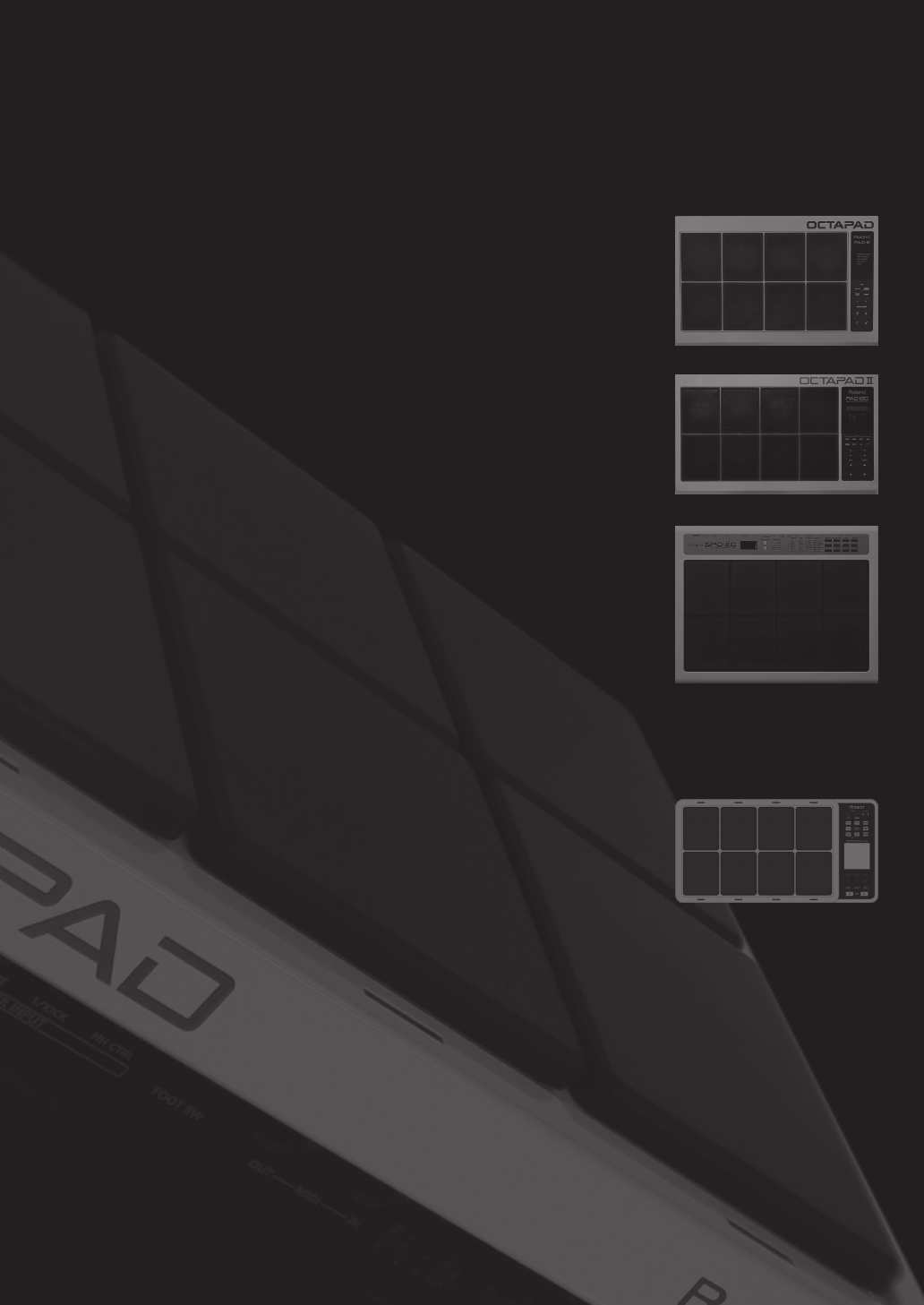
The OCTAPAD Legend
1985
was the year that Roland’s revolutionary percussion instrument
was announced — the “OCTAPAD” (PAD-8). A totally unique percussion
instrument, the OCTAPAD allowed one to perform on the 8 pads, and via
MIDI, control a drum machine (like the TR-909) or an external MIDI module or
sampler. This instrument was immediately adopted by musicians around the
world, not only for playing drum or percussion sounds, but also using it to
perform all styles of music.
1988 saw the release of the “OCTAPAD II” (PAD-80), which not only
maintained the exciting features of the rst-generation OCTAPAD, but added
many new ones like Layering and pedal control.
1990–1998 was the era when musicians used either of the rst-
generation OCTAPADs. As they did not have an on-board sounds, most of the
time they were connected to drum machines, (TR-909, R-8 etc) So In 1990,
Roland introduced the SPD-8 which had its own on-board sound source.
In 1993, It was followed by the SPD-11 which not only had more sounds but
also built-in eects processing.
And then in 1998, the legendary SPD-20 appeared on the scene. Which
featured a major enhancement to its sounds.
So throughout the years, the SPD series continued to evolve. And even
though the instrument was called and SPD-8/11/20, most people will referred
to it as an OCTAPAD.
2010 marks the comeback of the new OCTAPAD (SPD-30) for the 21st
century. While maintaining the basic design of the precedent models, this
new OCTAPAD features a large display, a friendly user interface, cutting-edge
sounds, eects, USB MIDI and the latest pad sensing technology developed
for the V-drums series.
The most exciting and evolutionary step of the new OCTAPAD is its “Phrase
Loop function” which allows you to turn your inspiration into sound; meaning
you can create your own rhythm loops, and layer your performance on top, all
in real time.
That alone enhances the potential of the 8 pads on board, and expands the
playable combination of percussion instruments.
The quarter-century legend of the OCTAPAD continues.


















